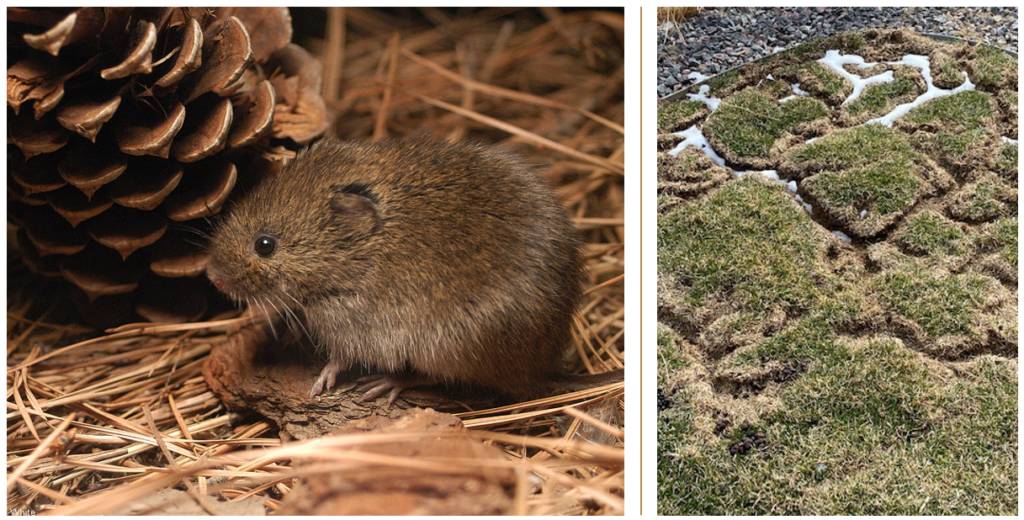Does Your Lawn Look Puzzling?
- 2023-03-05
- By mkirk
- Posted in Horticulture, The Garden Buzz
By Martha Kirk, Colorado Master Gardener

When I saw this photo of a vole, I thought how adorable and sweet, straight out of a Beatrix Potter book. As cute as voles are, they can be damaging to home landscapes. They create tunnels in lawns and chew the bark of shrubs and trees, thereby girdling woody plants and disrupting the flow of water and nutrients throughout the plant. In winter months with extended snow coverage, they go unnoticed until the snow melts, revealing their trails. The pattern often looks like puzzle pieces or shifting continents.
Eight species of voles live in Colorado. The most common one along the Front Range in urban areas is the meadow vole, Microtus pennsylvanicus. Vole populations are cyclical, and their abundance varies depending on food sources, climate, predators and more.
Several approaches can be taken to reduce vole activity. Changing the habitat where voles are located can be highly effective. Tall vegetation and grasses can be cut down adjacent to lawn areas to remove the vole’s protective cover. Voles can hide under landscape fabric, so removing fabric is advisable. The idea is to modify the landscape to remove hiding places. Another approach is to use metal or plastic mesh to protect a newly planted tree, shrub or even favorite perennials. Trapping is a third option. Set up snap-traps at the entry point, secure them to the ground and place a protective cover over them to keep pets away. Repellents with an odor such as Milorganite can be used to deter voles. Reapply repellents regularly to maintain effectiveness. Voles are part of the natural environment and are a critical food source for owls, hawks, foxes and other predators.

The good news is that turf is resilient. Repair the lawn by raking native soil into the tunnels and affected areas, then apply fertilizer, overseed the area and water. The grass will begin to grow, fill in and recover.
Horticulture Resources
- Garden Buzz Archives
- CSU Extension Resources
- Colorado Master Gardener Program
- Foothills to Plains Native Plant Master Program
- Native Bee Watch Community Science Program
- The Co-Hort Blog
- PlantTalk Colorado
- Soil Testing
- Plant Select
- Emerald Ash Borer
- Japanese Beetle
- Colorado State Forest Service
- Ask an Expert


